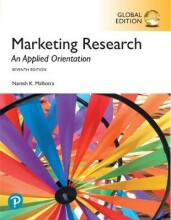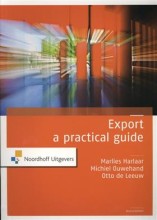Organizational technology
23 important questions on Organizational technology
- What does organisational technology entails and what is the Modernist, Symbolic and Postmodernist view?
Knowledge, processes, tools and equipment that an organization uses to transform inputs into output.
Modernist view technology as the producer of products and services
Symbolic researchers view technology as a product of social construction and enactment.
Postmodernist view technology as having questionable morality because control can be hidden inside of it
On what different level can technology be analysed and how is it connected to the environment of an organization?
Technologies that deliver a service differ from manufacturing in which three ways?
- Services are consumer as they are provided
- intangible
- they cannot be stored in inventory
- Higher grades + faster learning
- Never study anything twice
- 100% sure, 100% understanding
What are typologies and which three are discussed?
Typologies each define dimensions to empirically measure organization technology
- Woodward's typology
- Thompson's typology
- Perrow's typology
What does Woodward's typology entail?
(was the first to theorize about technology)
He shows that structure is related to performance but only when the type of core technology used by the organization is taken into account.
The optimal structure is contingent upon the core technology used
Explain the different types of technology Woodward considered
- Unit technologies produce one item or unit at a time
- Small batch technologies produce a few units at the same time-
- Large batch technologie produce large quantities of identical products
- Mass production technologies consist of workers and machines performing specific tasks that each complete only a portion of the finished product
The first two succesful in organic organizations
second two in mechanistic organizations
- Continuous processing technology; consists of a series of non discrete transformations occuring in a sequence (example; oil refining)
What were the limitations of Woodwards typology and how is this linked to Thompsons typology?
She only studied small and medium sized organizations and ignored organizations whose core technology delivered a service.
Thompson included these organizations.
What are the 3 types of technologies in Thompsons typology? And how are these 3 differentiated
They are differentiated based on the standardization of their inputs, outputs and transformation processes.
- Long-linked technology; a linear transformation process in which inputs enter and pass through a series of sequential steps and emerge as a product
- Mediating technology bringing clients or customers together in an exchange or transaction to provide a service
- Intensive technology; coordinating the specialized abilities of multiple experts when transforming a nonstandard input into a customized output
Perrows typology proposes that different types of technology are associated with two different things, explain these two
Task variability: the number of exceptions to standard procedures when applying a given technology. This dimension relates to technical complexity as the greater the technical complecity, the greater the variability of tasks
Task analyzability; the extent to which there are methods for dealing with exceptions when they occur. This dimension is related to centralization because high analyzable tasks faclitate decentralized authority structures as standardization and routinization can be applied to manage performance
Based on task variability and task analyzability, Perrow distinguishes 4 classes of technology, which four?
- Routine technologies: low task variability, high task analyzability
- Craft technologies: low task variability, low task analyzability
- Engineering technologies; high task variability, high task analyzability
- Nonroutine technology; high task variability, low task analyzability
What is technology's contribution to structural contingency theory?
Explain what the concept of routineness of work entails and when it is evident
Why do unit and continuous process technologies suit the organic structure?
They both support nonroutine work. It evident that mass production echnologies work well with mechanistic structures because they both support routine work.
Hence, the relationship between structure and technology is contingent on the routines of work
Explain the concept of pooled task interdependence and what does is require?
Explain the concept of sequential task interdependence and what does it require?
How is reciprocal task interdependece created? (reciprocal = wederkerig)
It is created by intensive technologies and it involves a constant exchange of information between workers transforming inputs into outputs. Wrok inputs to the transformation process are worked upon simultanelously by members of a work team.
In intensive technologies workflows move reciprocally among workers.
Individuals and units transforming the inputs have to take part in mutual adjustment. This is important because of the reciprocal nature of their task interdependence.
Mutual adjustment takes the extreme form of teamwork
What is the difference between new and emerging technologies?
New technologies are made possible by computers
Emerging technologies posses the potential to disrupt the current social or economic conditions.
From a symbolic perspective, technologies are of interest because the information and data they produce need to be manipulated and interpreted.
Weick theorized that new technologies differ from old ones in three manners, which three?
By being
- stochastic
- continuous
- abstract
Explain the following concepts: technical complexity and tight coupling
Technical complexity; the number of components in a system
Tight coupling; the interdependence between the component in a system
What are according to Perow the causes of the unreliability of new technologies?
Which concepts increase the demand for communication in an organization?
- Technical complexity
- task uncertainty
- task interdependence
This need for communicaton shapes organizational structure
Explain the theory of the social construction of technology
Explain the actor-network theory by defining the concepts of actor and actants
This theory is the association of human and nonhuman actants.
The actor network is an association of human and nonhuman actants.
Actants are any people or things that are playing a narrative role in a narrative or theory
The question on the page originate from the summary of the following study material:
- A unique study and practice tool
- Never study anything twice again
- Get the grades you hope for
- 100% sure, 100% understanding






























